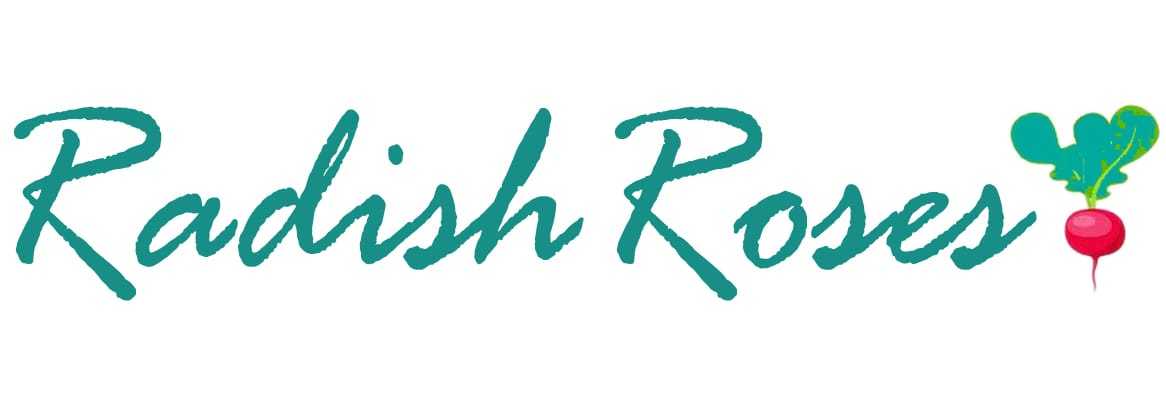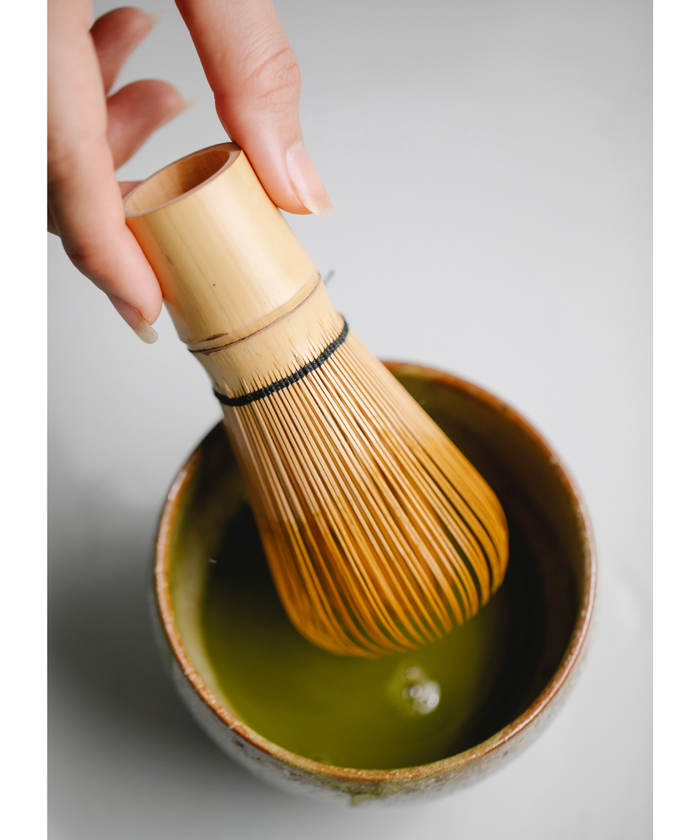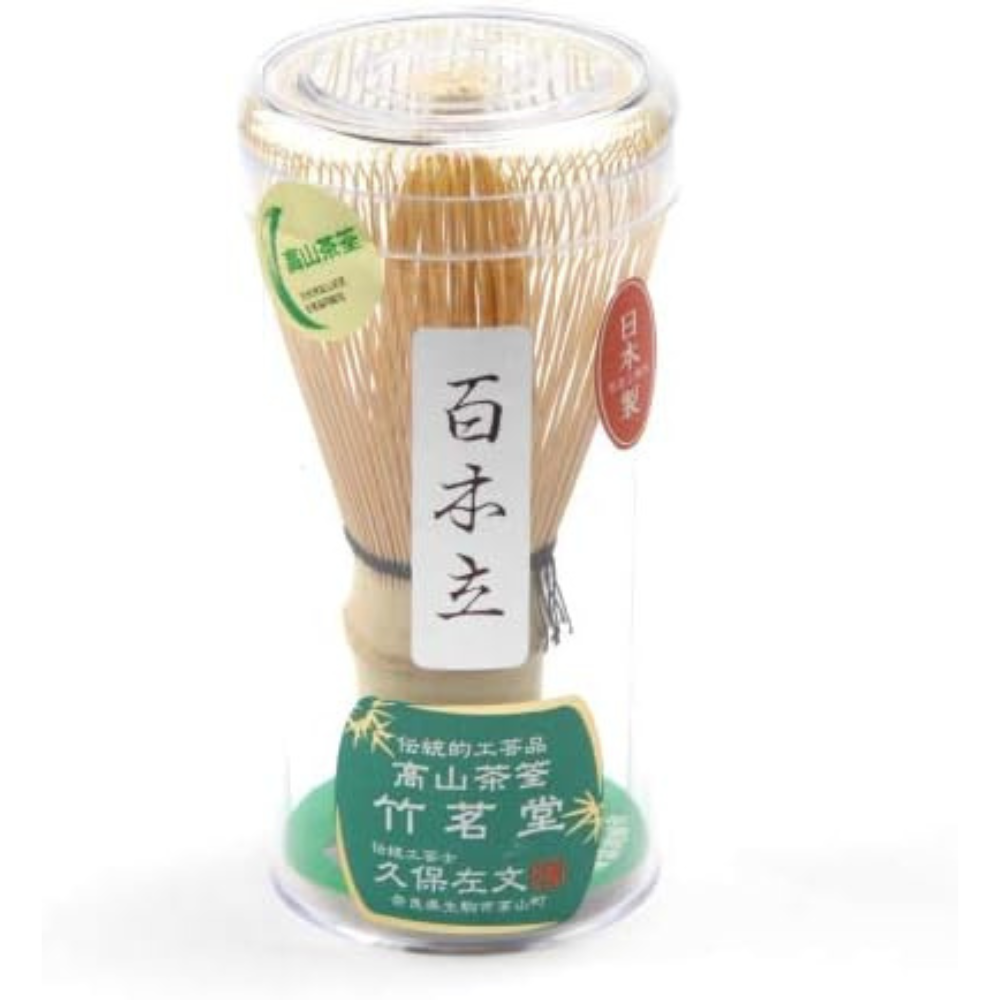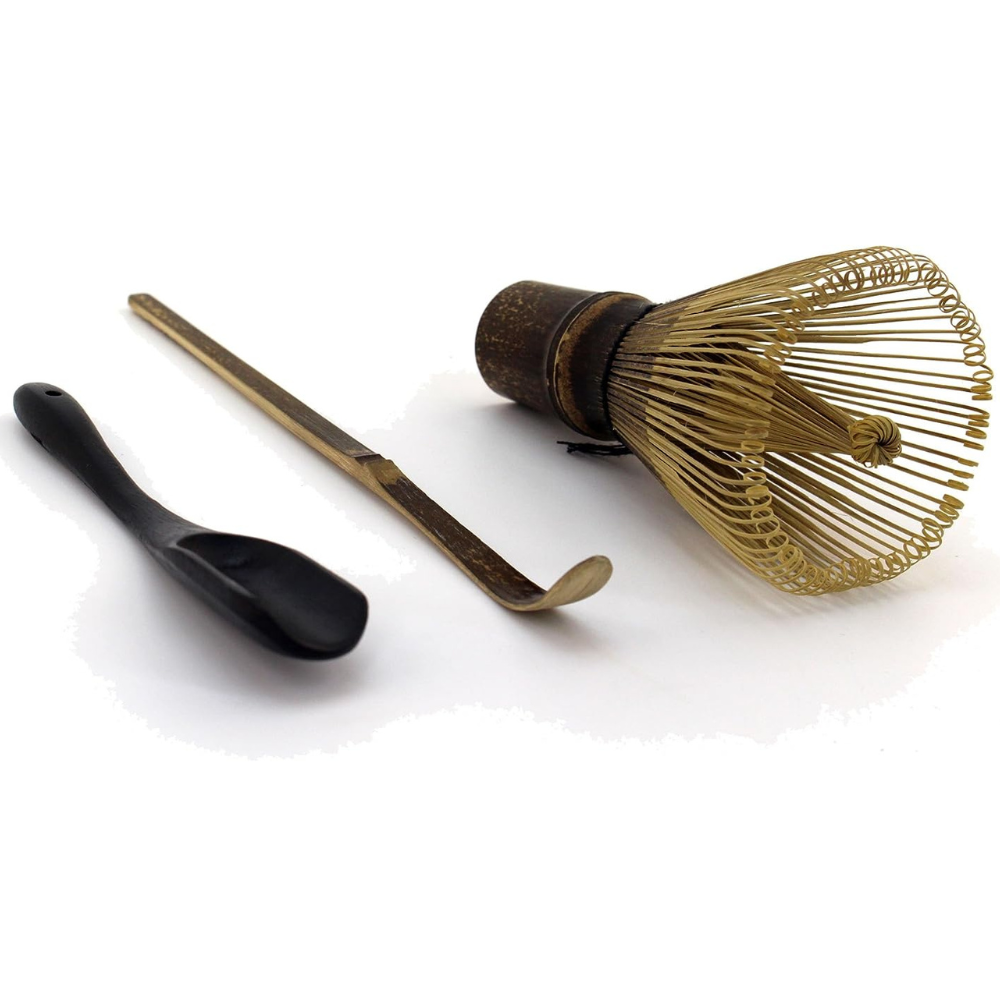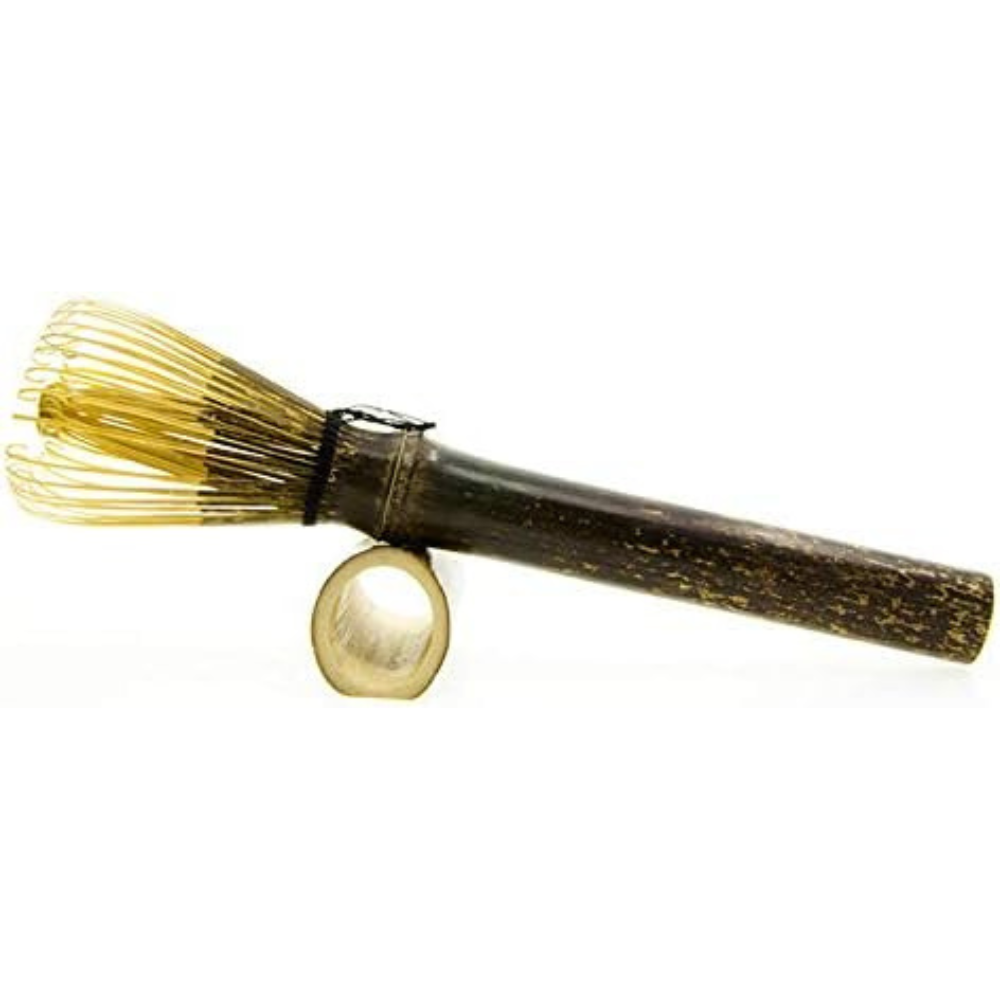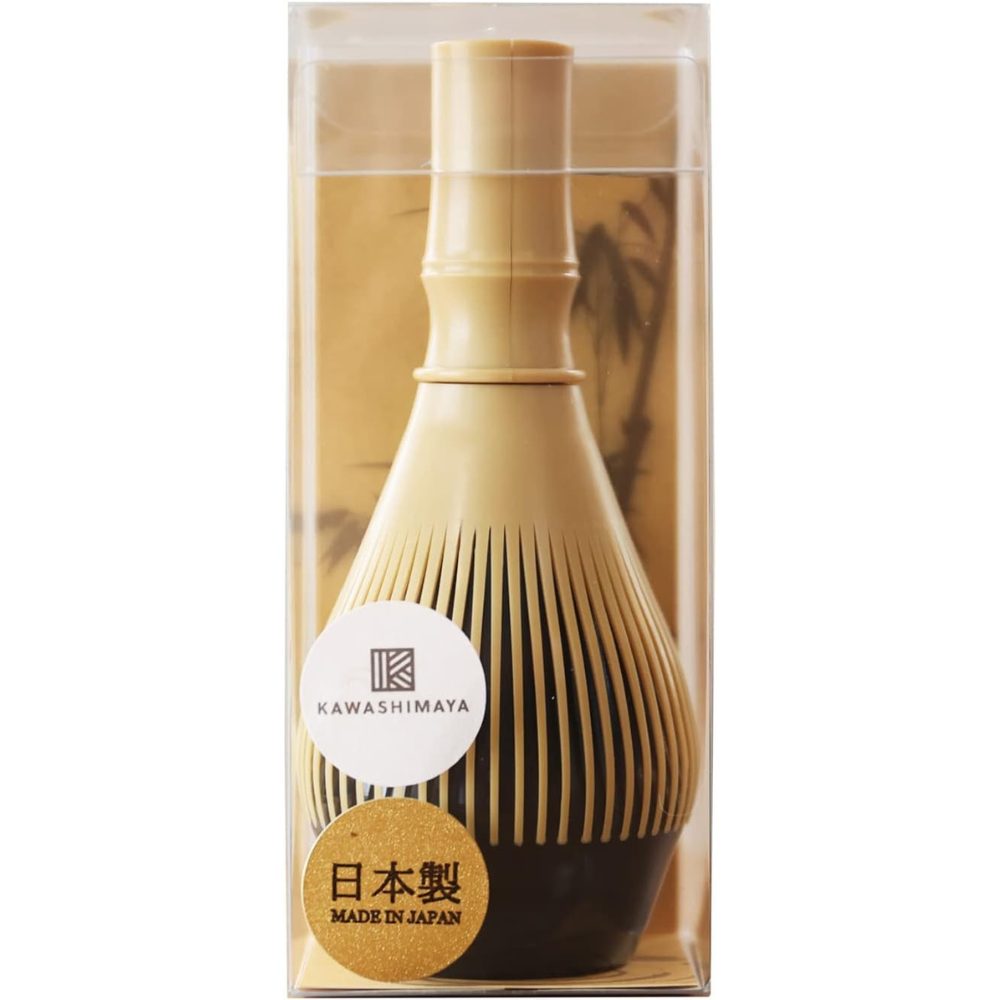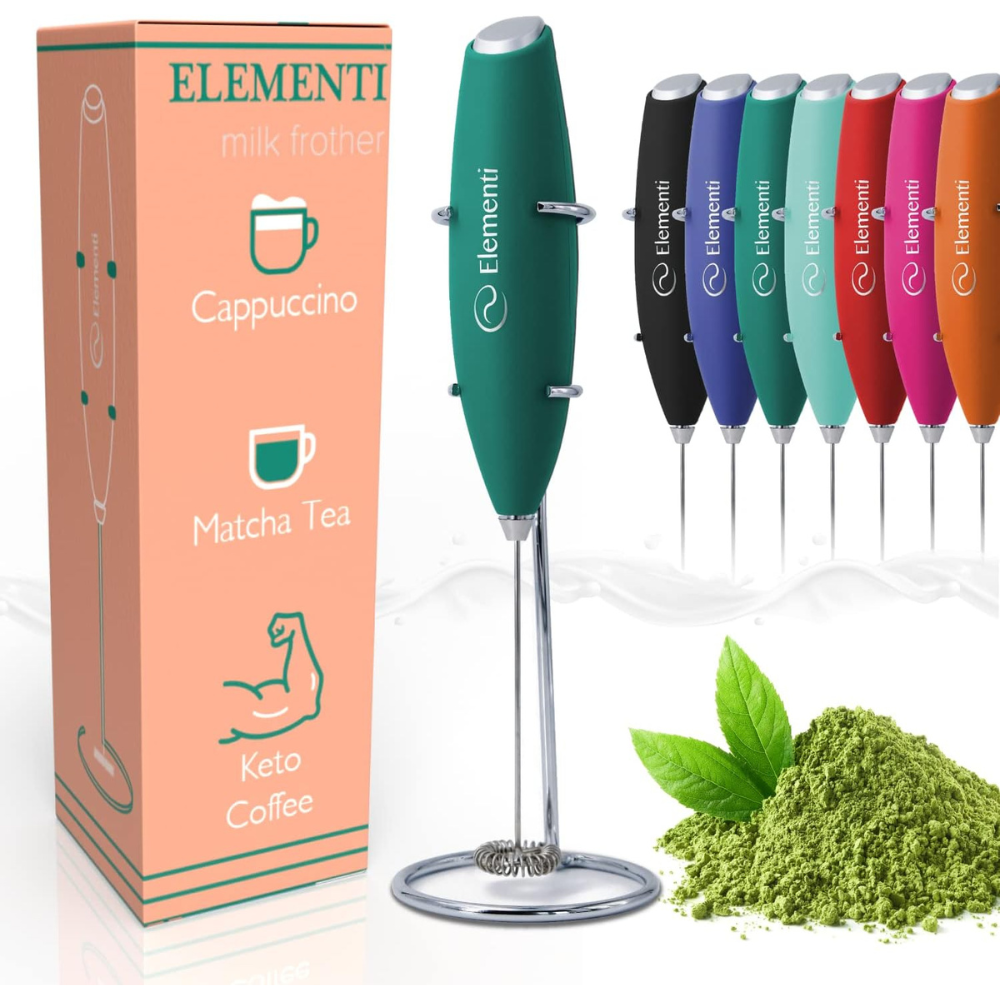Are you looking to whip up the best cup of matcha ever?
Have you heard of a matcha whisk but are not sure what it is or how to use one? We’ve got the answers so that you can be an expert on frothing up delicious drinks in no time. We will help you learn everything there is to know about matcha tea whisks and how they can help bring your tea-making skills to the next level. We’ll answer all your questions, from “What are matcha tea whisks?” to “Which models work best?". With a bit of knowledge under your belt (and maybe a sweet treat in your mug) soon enough you'll be an expert when it comes to frothing up that perfect cup of tea.
Drink confidently knowing that with the right information, tools, and practice – you will make better matcha tea lattes than ever before.
Read on, and become an expert on using a matcha whisk to make the best matcha.
Don't worry - You've got this!
What Are Matcha Whisks?
Matcha tea whisks, also known as chasen, are traditional Japanese utensils that have been used in the preparation of matcha green tea since the 12th century. They are typically handmade from bamboo and look something like a small whisk or brush. Matcha tea whisks help to make frothy foam when mixed with hot water, giving the matcha a delightful taste.
There are two varieties of chasens: one with 80 prongs and one with 100 prongs. The 80-pronged variety is meant for everyday use, while the more elaborate 100-pronged variation is used during tea ceremonies or special occasions.
Takayama is a village in Japan’s Gifu province, renowned for its craftsmanship and intricate production of bamboo matcha whisks. They are traditionally crafted from single pieces of bamboo, carefully selected, cut, dried, heated, bent and shaped with great skill to make the ideal tool for making matcha tea.
Using a chasen to prepare your matcha will give you an ideal frothiness and result in an even suspension of particles in your tea– giving you the perfect cup every time!
Other Styles of Matcha Tea Whisks
While a traditional bamboo whisk is traditionally used for preparing matcha, there are several alternatives that you can use. One alternative is the plastic or resin whisk. These pieces are durable and do not warp or wear out as quickly as a bamboo matcha whisk. They are also dishwasher safe, which makes them easy to clean.
Another alternative is the electric milk frother. This gadget, can also be used to prepare matcha. It's a convenient and quick option, especially if you're making a larger batch of matcha.
Finally, a regular kitchen whisk can also be used, although it may not create the same level of frothiness as a bamboo matcha whisk or an electric frother. Regardless of the tool you use, the key is to whisk briskly in a zigzag motion until your matcha is frothy and lump-free.
Another thing to consider when choosing the right whisk for you is the handle length. A longer handle gives you more control over the amount of foam that's created and makes stirring easier. Shorter handles may be more comfortable to hold and can fit better in a smaller mug, but they don't offer as much control.
How To Use A Matcha Whisk
Using a matcha whisk is actually quite simple! Start by putting about 1 teaspoon of matcha powder into your mug or bowl. Then, slowly pour hot water over the powder and use the whisk to mix it until you have a nice, frothy mixture.
When you're done stirring, make sure to rinse the whisk and store it in a dry place. Many chasen will come with a special stand or "chawan" to hold it's shape while it is dried.
By taking care of your bamboo matcha whisk and using it correctly, it should last you several months, even with daily use.
The Best Matcha Whisks
MADE IN JAPAN Takayama Chasen
What Stands Out:
- Bamboo matcha whisk
- This chasen is handmade in Japan
- 100 tines
The Downside:
- Authentic Japanese-made Takayama Chasen is more expensive than others
- Does not include the chawan (whisk holder)
BambooMN Matcha Whisk Set
What Stands Out:
- Small business
- Bamboo matcha whisk
- Includes chasen, chashaku scoop, and additional deep scoop
- 100 tines
The Downside:
- Sourced from China
- Does not include the chawan (whisk holder)
ZENRC Handmade Organic Natural Bamboo Whisk
What Stands Out:
- Long and narrow (5.91"L x 0.98"W) to fit taller cups
- Money-back Guarantee
- Traditionally made from single piece of bamboo
The Downside:
- Difficult to use with traditional-sized matcha cups
Kawashimaya Plastic Matcha Whisk (Chasen) with Holder Set
What Stands Out:
- Dishwasher safe
- Includes chawan (holder)
- Made in Japan
- Plastic has higher durability
The Downside:
- Not made in the traditional ceremonial style bamboo
Elementi Matcha Whisk and Milk Frother
What Stands Out:
- Easy operation
- Comes in several color options
- Includes stand
- Small Business
The Downside:
- Metal is generally not thought of as suitable for mixing matcha
- Non-traditional method
Questions about Matcha Whisks - FAQs
q: What kind of whisk is best for matcha?
a: The best type of whisk to use for this is what's called a chasen. It's also sometimes referred to as an "oil whisk" or "tea whisk."
Chasens are traditional Japanese whisks made from bamboo. This is the ideal tool for evenly distributing the matcha powder in water and creating an airy foam — essential components when it comes to brewing the perfect bowl of matcha.
The shape of the chasen makes it easy to stir up any stubborn lumps in the powder that may be difficult to dissolve using other implements— like spoons or electric instruments.
Not only does using a chasen make brewing matcha easier and more enjoyable but its benefits also go beyond just taste: its unique design actually helps protect against oxidation, meaning your drink will retain its antioxidants longer than if you had brewed with another method. This can help ensure that all those healthful benefits are still present even after everyday use!
Overall, if you're looking for the best way to get that beautiful frothy foam without having trouble with clumping matcha powder – then investing in quality (and traditionally crafted) Chasen might be exactly what you need!
q: Does matcha whisk quality matter?
a: Yes, the quality of your matcha whisk does matter.
A good quality whisk will give you a smooth, frothy matcha that fully incorporates all the beneficial nutrients and antioxidants into your beverage.
When choosing a matcha whisk (chasen), it's important to consider several factors:
Tine material: The tines on traditional Japanese tea whips are made out of bamboo. Bamboo is an ideal material for making chasen since the tines are strong yet flexible and can absorb some water which helps create a smoother texture for your foam. Look for whips that use 100% natural bamboo for the best matcha.
-Shape: Matcha tea wisks come in two main shapes - chasen (flat) or konnoko (spherical). The shape you choose depends on personal preference as well as what kind of consistency you'd like in your tea - more foamy or smoother. People who prefer richer foam often go with chasen while those looking to achieve a silky finish might opt for the konnoko variety.
-Number of tines: A typical chasen will have anywhere from 80 to 120 tines, while spherical styles can have up to 200! Generally speaking, more tines usually mean better performance when creating fine bubbles and froth – though there can be variety depending on craftsmanship. If you’re serious about making authentic Japanese teas like matcha or sencha with ultrafine bubbles then look at models with plenty of tines!
Making good quality matcha requires patience and practice but using high-quality equipment such as the correct type and shape whisk also makes a difference in terms of producing great-tasting drinks packed full flavor & nutrition.
q: Do you really need a bamboo whisk for matcha?
a: Absolutely! Enjoying a cup of matcha green tea is an art in itself. Traditionally, it's prepared with a bamboo whisk and if you want to do it properly, you'll need one.
A bamboo whisk helps create the perfect froth for your matcha - it's essential for aerating the tea and releasing its sweetness and aroma.
Aside from making your matcha drink taste amazing, using a traditional Japanese tool like a bamboo whisk also helps bring out the calming Zen-like aspect associated with drinking matcha. When you use this type of utensil to stir your bowl of tea, it becomes almost like a meditation experience that can reduce anxiety and promote relaxation.
Additionally, there are now dozens available on the market - meaning that everyone can find some sort of style that appeals to them aesthetically or which fits within their budget! You can find intricate handcrafted chasen made by experienced artisans or streamlined versions created from more modern materials such as stainless steel or plastic. Ultimately though – any one of these will help bring out the flavors in your next delicious Matcha green tea!
q: Do I have to soak my matcha whisk every time?
a: It’s not absolutely necessary to soak your matcha whisk before you use it, but doing so is highly recommended.
Soaking the whisk helps keep the tines soft and flexible. This enables them to move more freely through the powdered tea, helping create that signature frothy top layer added to the finished drink.
If you don't have the patience to soak your whisk before you prepare a cup of matcha tea, here are some tips for getting great results without soaking: After you rinse clean, removing any powdered residue from the previous day, swirl the wet bristles in a circular motion within your matcha bowl or cup for about 10 seconds before beginning your normal stirring routine. The extra hydration you give to the tines will help with the production of foam while still providing enough friction and pressure needed for blending all ingredients together.
In summary, it's best practice to regularly soak your matcha whisk in warm water prior to use; however if in a pinch there are measures one can take in order to still get a great product without fully submerging it first.
q: Why can't you mix matcha with metal?
a: Mixing matcha with metal is not recommended for a few reasons.
The pH balance of matcha is slightly acidic at 4.0-4.2, and mixing it with metal will create an unclean taste as well as strip any positive benefits from the tea itself. This is because metals like stainless steel, aluminum and certain alloys contain a high concentration of free ions, which interact harshly with organic compounds like those found in tea leaves.
Furthermore, research has shown that when matcha comes into contact with certain metallic surfaces (such as stainless steel), trace amounts of chemicals can leach out into the drink – this could end up affecting its flavor and even be hazardous to your health if consumed regularly due to heavy metal contamination. You should never clean ceremonial grade matcha materials with soap or let them come into contact with anything other than ceramic and wooden materials designed specifically for Japanese traditional teas such as bamboo "Chasen". Doing otherwise may damage its sensitive flavor profile and overall quality upkeep.
q: Do you whisk matcha with hot or cold water?
a: Generally speaking, you should whisk matcha with hot water for the best flavor. However, there are many ways to enjoy this delicious Japanese green tea powder!
When making a traditional bowl of matcha, you want to heat your water to around 160-175°F (70-80°C) and whisk until it is light and frothy. This will ensure that all the clumps of powder separate, are broken up and fully dissolved into the liquid so you can enjoy a smooth cup of matcha without any unpleasant chunks stuck to the bottom. Additionally, heating your water helps bring out the unique flavor notes in this special kind of tea.
That being said, some people still choose to whisk their matcha with cold water or milk for iced beverages or lattes. By combining small amounts of cold liquid gradually with the powdered tea leaves before you add more hot liquid, you can get an even texture and full-bodied taste while cooling off your beverage as well! Whichever way you decide to make your cup of goodness - hot or cold – don’t forget about proper whisking techniques!
Now that you're an expert on the matcha whisk, not to mention using and caring for your whisk, nothing can stop you from making the best matcha around!
So don't wait any longer. Choose the right whisk for your needs and get brewing! With just a few simple steps, you'll be able to make delicious, frothy matcha every time.
Enjoy!
